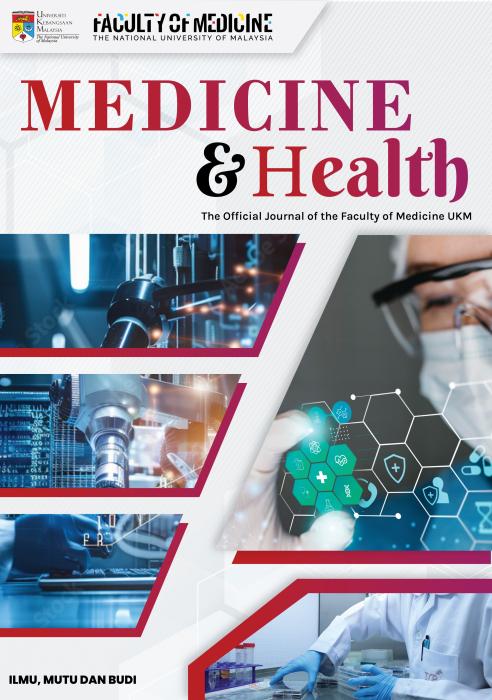Quality Of Life amongst Post Coronary Artery Bypass Patients at the National Heart Institute, Malaysia
Quality of life in post coronary bypass patients
Abstract
Coronary Artery Bypass Grafting (CABG) surgery has increased the survival rate for individuals suffering from myocardial infarction or coronary ischemia. The present study aimed to examine the perception of quality of life amongst post CABG patients at the National Heart Institute Malaysia. A total of 69 post CABG patients, were studied using the Medical Outcomes Short Form 36 (SF-36). The findings showed that post CABG respondents possessed good level of quality of life (SF-36) physically and mentally. There were significant differences between the role physical in the physical functioning domains of quality of life with gender (t=0.286, p<0.05). Duration of physical exercises of more than 20 minutes have positive effects on both physical (t=2.738, p<0.05) and mental components (t=7.326, p<0.05). The level of income influenced both the physical component (F=3.100, p<0.05), and mental component (F=4.272, p<0.05). Post CABG patients were found to have high quality of life post operatively. They were able to make comprehensive lifestyle changes through frequent physical exercises to accommodate their needs.
Keywords :
Coronary artery bypass,
grafting,
post-surgery,
quality of life,
Abstrak
Pembedahan pintasan arteri koronari jantung telah menambahkan kadar kemandirian terhadap individu yang menghidapi infarksi miokardium atau iskemia koronari. Kajian ini adalah untuk mengenalpasti persepsi tahap kualiti hidup di kalangan pesakit selepas pembedahan pintasan arteri koronari jantung di Institut Jantung Negara. Seramai 69 responden selepas pembedahan pintasan arteri koronari jantung telah menyertai penyelidikan ini dengan menggunakan borang soal selidik SF 36. Penemuan kajian menunjukkan responden selepas pembedahan pintasan arteri koronari jantung mempunyai tahap baik kualiti hidup (SF-36) fizikal dan mental. Terdapat perbezaan yang signifikan antara peranan fizikal dalam domain fungsi fizikal kualiti hidup dengan gender responden (t=0.286, p<0.05). Tempoh latihan fizikal lebih dari 20 minit mempunyai kesan positif pada kedua-dua komponen fizikal (t=2,738, p<0.05) dan mental (t=7,326, p<0.05). Pendapatan responden mempengaruhi kedua-dua komponen fizikal (F=3.100, p<0.05) dan mental (F=4.272, p<0.05). Kesimpulannya, pesakit selepas pembedahan pintasan arteri koronari jantung mempunyai kualiti hidup yang tinggi. Mereka mampu membuat perubahan gaya hidup yang menyeluruh melalui senaman fizikal yang kerap untuk menampung keperluan mereka.
Kata Kunci :
Kualiti hidup,
pembedahan pintasan arteri koronari,
selepas pembedahan,
Correspondance Address
Ho Siew Eng, Department of Nursing, Faculty of Medicine, Universiti Kebangsaan Malaysia, Jalan Yaacob Latif, Bandar Tun Razak, 56000 Cheras, Kuala Lumpur. Tel: 603-9145 6262. Fax: 603-9173 8254. Email: ho@ppukm.ukm.my








